Humidity can be tricky to control. When the relative humidity inside of your house is too high (southerners, you know what I’m talking about), uncomfortable doesn’t even begin to describe how you feel. Proper relative humidity staves off dust, allergies and colds. Plus, it prevents moisture-related damage to the structure of your home.
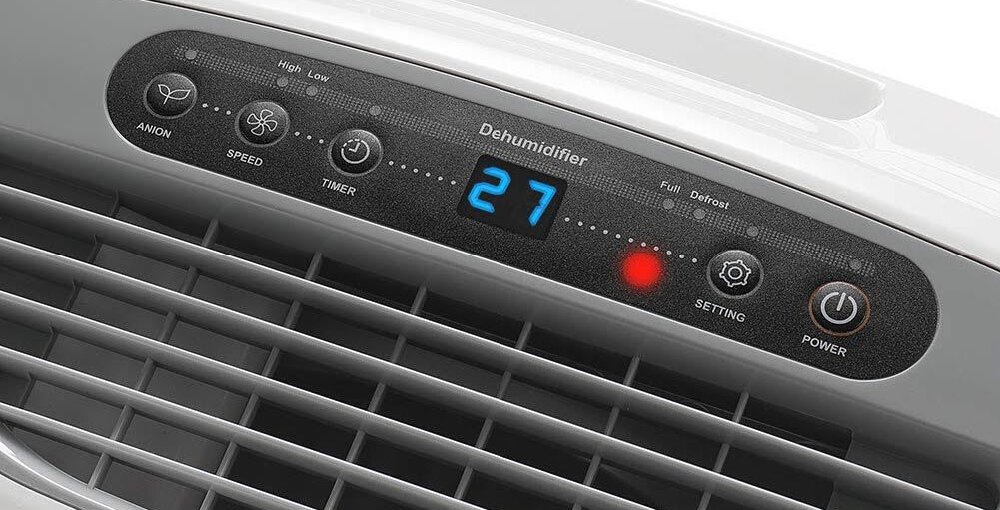
What is the best way to reduce indoor humidity? A dehumidifier is the gold-standard solution, and we’ll briefly talk about the different types of dehumidifiers at the end of this article. However, there are other measures you can take to lower the humidity level in your home. If you choose to put these tips to use along with running a dehumidifier, the dehumidifier won’t have to work as hard, and you’ll stay comfortable 24/7.
High Humidity Signs
Not sure if the humidity level in your house is too high? Your house may be holding a few clues such as mold and musty odors. Condensation on windows and walls is another sign of excessive humidity levels. Then, there is wood and drywall. If wooden doors are warped or drywall has chipped paint, humidity could be the culprit.
Then, there are signs and symptoms you may notice with your own body or that of a household member. For instance, if your partner is snoring louder than usual, humid air may be to blame. Exacerbated allergy symptoms and the inability to cool down after sweating also point to high relative humidity.
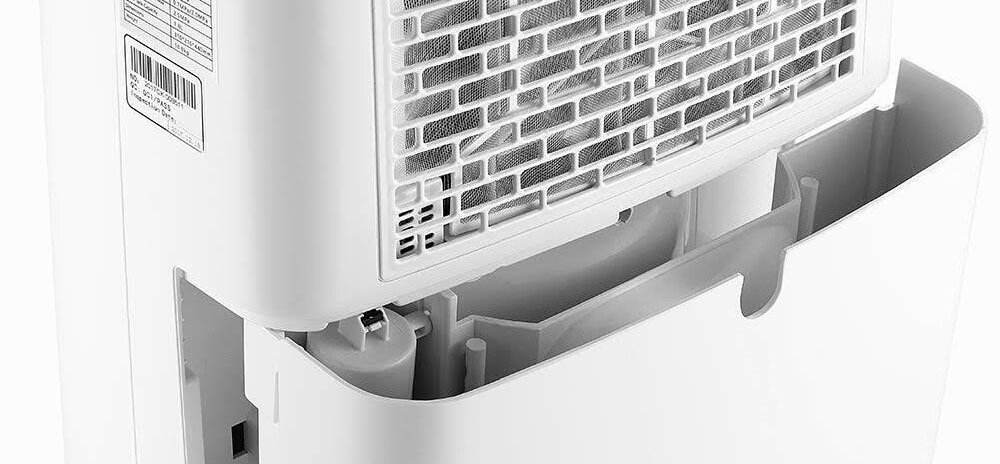
Measure It to Confirm
If you suspect that humidity in your home is too high, there’s a way to check the relative humidity before you start trying our suggestions. A hygrostat is an inexpensive tool that measures the amount of moisture in the surrounding air.
According to the Environmental Protection Agency, a healthy indoor relative humidity ranges from 30 to 60 percent. If your hygrostat reads above 60 percent, keep reading to find out how to reduce the humidity in your home.
Ventilate Your House
Get that stuffy air moving and ventilate your home. Ventilation is one of the easiest and fastest ways to lower the relative humidity, especially in bathrooms and the kitchen since that’s where moisture tends to accumulate the most.
Make it a point to open a window or two in each room for at least a couple of hours each day. Placing fans in front of the windows, with the airflow going outward, can help circulate the air. If your home has an attic fan, run it too.
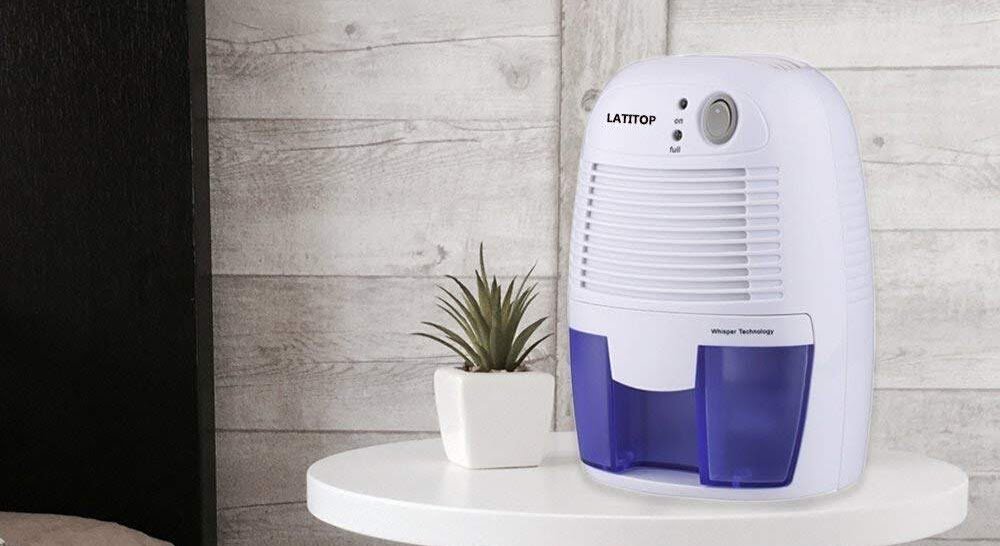
Related Post: Is a Dehumidifier Good or Bad for You?
Turn on the Air Conditioner
An air conditioner helps reduce the humidity in two ways. First, it circulates the air in the room (if it’s a portable or window unit) or the house (if it’s a central unit). It also cools the temperature of the air. As the air conditioner pulls moisture from the air and cools the space, the humidity will decrease too.
Before you crank up the A/C, do a quick maintenance check. First, take a look at the filter. If the air conditioner’s filter is dirty, replace it. Otherwise, the air won’t flow as well, leading to impaired efficiency. Don’t forget to empty the drip pan and make sure the drain line is clear.
Change the Way You Shower
Hot showers = hot steam, and that moisture contributes to your home’s overall relative humidity. Of course, a long shower means a lot of steam will be produced. When your house is humid, keep your showers as short as possible. If you want to take a long shower can stand it, make the water room temperature or cool.
Some people can’t give up their hot shower. If this sounds like you, focus on minimizing the steam accumulation. Ventilate the room by opening a window during and after your shower. If there is no window in the room, run the exhaust fan or set up a box fan that directs the airflow out of the bathroom.
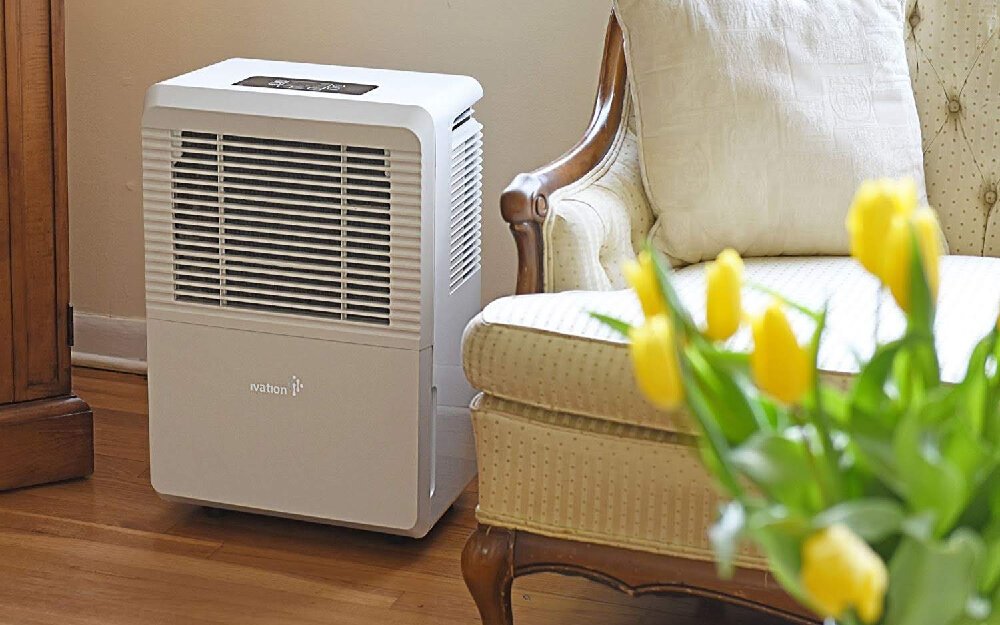
Plan Your Menu Accordingly
The kitchen is another place where the humidity can skyrocket. We know that the idea of eating a bowl of chili that’s been simmering all day on the stove is appetizing. However, simmering food for hours is counterproductive to lowering the relative humidity.
If you’re gearing up for a humid day, consider what you want to cook. Stay away from meals that require boiling water or simmering sauce. If your heart is set on spaghetti and you must boil water, cover the pot with a lid to trap the moisture.
Give the Dryer a Rest
Clothes dryers can be a big humidity producer if the moisture they pull from the wet clothes isn’t properly vented. On humid days, you can opt to air dry your clothes. However, wet clothes that are hung to dry in a non-ventilated room will increase the relative humidity.
Ideally, you should line dry your laundry outdoors. If you live in an apartment or somewhere that doesn’t allow line drying, open the windows in the room where you hang your clothes. If you must use your dryer when it’s humid, try to consolidate your laundry into a single load.

Choose Plants With Care
Houseplants can either up or reduce the indoor relative humidity; it depends on the soil, watering frequency and species. There are some plant species that collect moisture in the air to use as their main water source, such as the Boston fern, English ivy and peace lilies.
Other plants can contribute to high indoor humidity. Plants that require a lot of watering should be kept outside for a few hours after you water them because the water in the soil evaporates into the air. Alternatively, you can cover the soil with burlap or stones.
Rethink That Carpet
That carpet in your living room and area rug in your bedroom are not doing the relative humidity level in your home any favors. The padding underneath carpeting collects moisture over time. Carpets are also notorious for accumulating dust, mildew and mold.
Hardwood and other hard-surface flooring materials don’t pose a humidity problem. If you just can’t bear to part with your carpet, make sure to dry all spills promptly. If it has been a while since your area rugs have been cleaned, a trip to the cleaners is in order.
Insulate, Insulate, Insulate
The humid air outside of your house can come right on in if your home isn’t well-insulated. To prevent this problem, seal any cracks or holes in the walls. For concrete walls, which are typically basement walls, you’ll need to waterproof them to stop condensation buildup.
Doors and windows are two other entry points for humid outdoor air. If your windows let in drafts and don’t have condensation between the panes, you may be able to get away with caulking, using clear film or weather stripping the gaps. Weather stripping can also help make doors airtight.
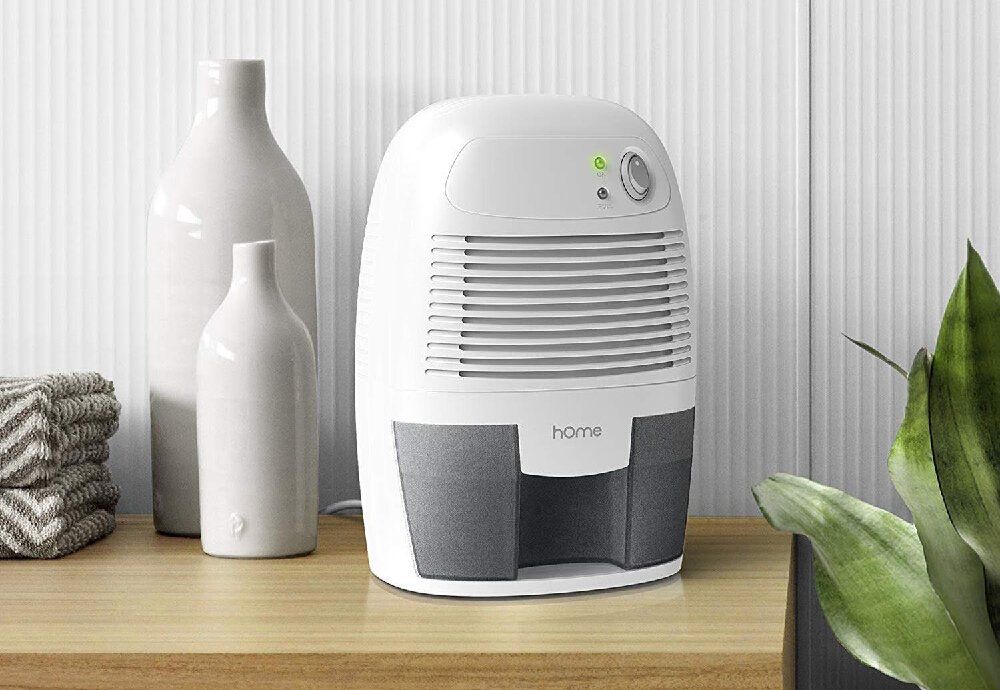
Absorption Materials
While not a whole-home high-humidity remedy, you can make a simple moisture collector to lower the humidity in a bathroom, kitchen or another enclosed space. The least expensive collector to make involves charcoal briquettes – The same kind you use for grilling. Simply dump the contents of the bag into a basket, and the briquettes will absorb the surrounding moisture for several months.
Rock salt and silica cat litter are two other options. None of these materials is a substitute for a true-dehumidifier. See the last section of this article to learn more about the types of dehumidifiers you can buy.
Clear the Gutters
Most people know the importance of keeping their home’s gutters in working order and clear of debris. However, some people don’t know that poorly maintained gutters can impact the relative humidity inside of the home as clogged and broken gutters allow water to pool.
Even if your gutters are clean and pristine, you should also make sure that the downspouts are leading water away from your home’s foundation. Check the downspouts for holes and dents. Use Spanish blocks to route the water from your house.
Fix Any Water Leaks
Give the structural components of your house a once over. Unaddressed leaks are common causes of high indoor humidity. Replace loose or missing flashing or shingles on your roof before water starts to seep through the gaps. If you have dirt on the floor of your crawl space, cover the ground with plastic sheets.
Don’t forget your home’s plumbing. Inspect the drywall for signs of leaks. Look around your toilet and under your sink for leaky pipes. If you see condensation on the pipes instead of actual leaks, tubing will minimize the issue.
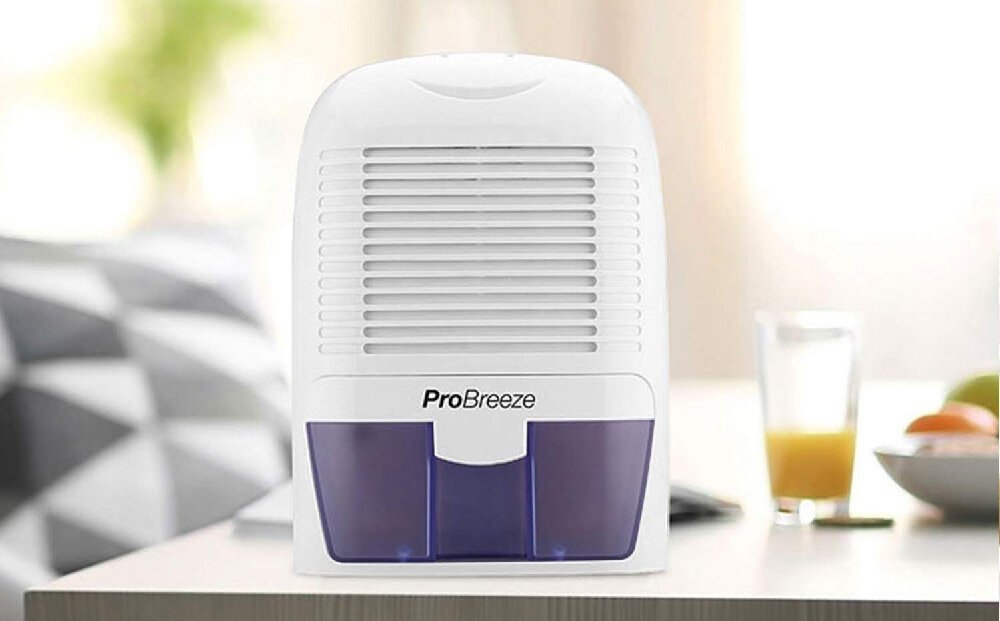
Run a Dehumidifier
Consistent use of a dehumidifier can go a long way to reducing the relative humidity. As far as dehumidifiers go, you have several options besides the homemade kind we discussed above. Heat pump dehumidifiers contain a heat pump, a fan and a coil – These dehumidifiers come in portable and whole-home varieties.
Ventilators are another type of dehumidifier. Ventilators are often the dehumidifier of choice for crawlspaces, basements and attics. There are also mechanical dehumidifiers that have silica gel or cartridges.
The majority of people who buy a dehumidifier prefer a portable unit. Portable dehumidifiers are cheaper than whole-home models, and you can use them when and where you want. Keep in mind the square footage of the spaces where you plan to use a dehumidifier to maximize the unit’s efficiency.
Guide: Best Dehumidifiers for Mold
Our Recommended Dehumidifiers
If you have any questions or comments, please add them below in the comment section. Similarly, please let us know if you spot any mistakes or omissions. Thanks!
Last Update: 2024-04-25 | Affiliate links/Images from Amazon Product Advertising API



